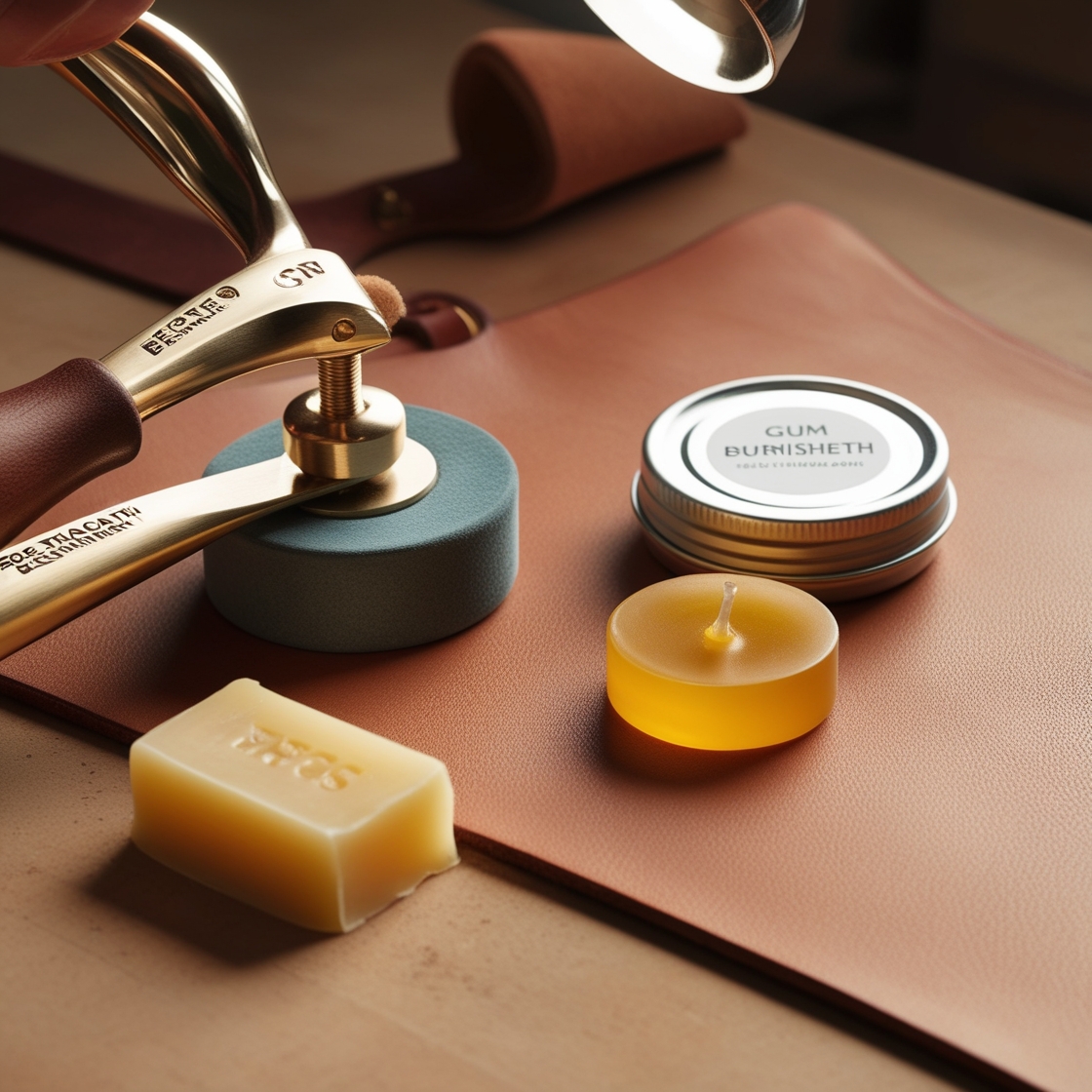Leather crafting is a meticulous art that transforms raw leather into beautiful, functional pieces. Among the various finishing techniques, burnishing plays a crucial role in giving leather edges a smooth, professional appearance. In this guide, we’ll explore what burnishing is, why it’s essential, and how to perfect this technique to enhance your leather projects.
What is Burnishing?
Burnishing is a finishing process that smooths and polishes the edges of leather. This technique not only improves the visual appeal but also increases the durability of the leather edges. By using specific tools and materials, you can achieve a sleek, refined look that elevates the overall quality of your leather goods.
Benefits of Burnishing
- Enhanced AestheticsBurnishing transforms rough, raw edges into sleek, smooth finishes. This polished look adds a touch of elegance to your leather projects, making them stand out. The refined edges contribute to a professional appearance, which is crucial for high-quality leather items.
- Increased DurabilityBeyond aesthetics, burnishing strengthens the edges of leather. By smoothing the edges, you reduce the likelihood of fraying and wear over time. This added durability ensures that your leather products maintain their integrity and beauty longer.
- Improved HandlingSmooth edges are not only visually appealing but also more comfortable to handle. Burnishing helps in creating edges that are pleasant to touch, enhancing the overall user experience of your leather items.
Essential Tools for Burnishing
To achieve the best results with burnishing, you’ll need a few key tools and materials:
- Edge BurnisherPurpose: An edge burnisher is a specialized tool used to smooth and polish the edges of leather. It helps in achieving a consistent, professional finish.Usage Tip: Choose a burnisher that suits the thickness of your leather for optimal results. Use it with a steady hand to ensure an even polish.
- BeeswaxPurpose: Beeswax is a natural product that can be used to enhance the burnishing process. It adds a layer of protection and a glossy finish to the edges.Usage Tip: Apply a thin layer of beeswax to the edges before burnishing to help achieve a smooth, shiny result.
- Gum TragacanthPurpose: Gum tragacanth is a traditional leather crafting product that helps in smoothing and conditioning the edges. It provides a sleek finish and improves the burnishing process.Usage Tip: Use gum tragacanth sparingly. A small amount goes a long way in achieving a smooth, polished edge.
Step-by-Step Guide to Burnishing Leather
Follow these steps to perfect the burnishing process and achieve stunning results:
- Prepare the EdgesBefore burnishing, ensure the leather edges are cut evenly. Use a sharp knife or edge tool to trim any rough or uneven areas.Tip: Smooth out any major imperfections before starting the burnishing process for the best results.
- Apply a Conditioning ProductApply a conditioning product like beeswax or gum tragacanth to the leather edges. This will help in achieving a smoother finish and protect the edges during burnishing.Tip: Use a clean cloth or applicator to apply the conditioning product evenly along the edges.
- Begin BurnishingUse an edge burnisher to work the edges of the leather. Apply steady, even pressure as you move the burnisher along the edges, smoothing out any rough spots.Tip: Work in small sections and keep the burnisher moving to ensure an even, polished look.
- Final TouchesOnce you’ve finished burnishing, inspect the edges for consistency. Make any necessary touch-ups to ensure a flawless finish.Tip: A final wipe with a soft cloth can enhance the shine and remove any excess conditioning product.
Dye & Paint Leather: Adding Color and Creativity
After achieving the perfect burnish, consider further enhancing your leather projects by dyeing or painting them. These additional techniques allow you to infuse your leather items with vibrant colors and unique designs, adding even more character to your creations.
- Leather DyeingDyeing leather can transform its color and add depth. Use dyes specifically formulated for leather and apply them carefully to achieve the desired shade.Tip: Test dyes on a small, hidden area of the leather first to ensure compatibility and achieve the desired color.
- Leather PaintingPainting leather is ideal for adding detailed designs or patterns. Use acrylic paints designed for leather to ensure the paint adheres properly and lasts.Tip: Apply a leather paint sealant after painting to protect your design and enhance its longevity.
Conclusion
Burnishing is an essential technique in leather crafting that brings both beauty and durability to your projects. By mastering this process, you ensure that your leather goods not only look professional but also stand the test of time. With the right tools and techniques, your leather edges will shine with elegance and strength. Additionally, incorporating dyeing and painting techniques can further elevate your leather creations, allowing for even greater personalization and artistic expression.
Explore our range of burnishing tools, dyeing products, and painting supplies to take your leather crafting to the next level. Embrace the art of leather finishing and create stunning, high-quality leather items.
Read more about How to Master Saddle Stitching for Leather
